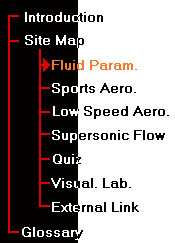

|
 |

Reynolds Number ; Re
The Reynolds number is named after Osborne Reynolds (1842-1912) who conducted an experimental study to see how and when laminar and turbulent flows occur through a pipe. The Reynolds number is a dimensionless parameter and is defined as
where
The Reynolds number is important in analyzing any type of flow when there is substantial velocity gradient (i.e., shear.) It indicates the relative significance of the viscous effect compared to the inertia effect. The Reynolds number is proportional to [inertial force] divided by [viscous force]. Example: When you move a spoon through air and then through syrup at the same speed, the corresponding Reynolds number is much lower in syrup. Reynolds number range (Numerical example): Using the Reynolds number calculator, try computing the Reynolds number of the followings. You may get a feel of the wide range of this parameter: Boeing 747:
Spermatozoa of a Sea Urchin:
Reynolds Number Help |

|

|